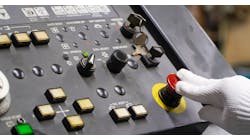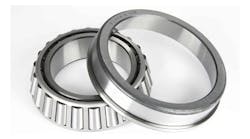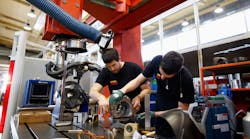Modern technology is advancing at such an alarming rate that it’s shaking up the commercial world. From machine learning and AI to IoT and cloud computing, new technologies present new opportunities but also alter the way manufacturers handle conventional operations.
That’s precisely the case in the machining world, as well. At one time, traditional precision machining methods were the go-to, but that has since changed. Many new machining processes promise to introduce various benefits, including improved efficiency, lower operating costs, greener and more environmentally-friendly solutions and — of course — higher precision for tasks.
To truly understand where the machining field is going, it makes sense to consider some of the newer trends. Here are some of the changes coming down the pipeline that will likely have a significant impact on the current state of machining.
1. Smarter, remote operable solutions — IoT, or the Internet of things, incorporates smart, connected devices (including smart sensors) to improve control over various equipment and deliver more insights. It also complements automation systems, so processes can be fully streamlined and managed in new ways.
Various machines then can operate autonomously, only requiring human input or oversight when something goes awry. But, the beauty of IoT and similar tech is that these systems can send the necessary alerts and data well before an adverse event. This foreknowledge is largely thanks to a real-time stream of data that is continually flowing in and being analyzed on the fly.
Project managers and maintenance crews alike can keep up with equipment on a more accurate timeline. That is, they can remedy problems before needing to take the equipment offline or inducing defects in the goods and materials processed.
If and when a problem with output arises, the robust insights available via IoT can lead to addressing an issue faster. Ultimately, it creates a much smoother and more efficient operation.
2. Laser-beam machining — This innovative and relatively new method is a thermal process for chip or material removal, and also known as laser micromachining (LBM). A high-energy laser beam focuses on a workpiece or component, and the thermal energy transfers to the targeted surface. Through fusion and vaporization, metallic or non-metallic targeted materials are removed.
Engineers also can deploy the process for welding, cladding, etching, surface treatment, drilling and cutting. It's frequently used to cut glass without melting or altering the surrounding edges and surface.
Laser beam machining is becoming more widely adopted in manufacturing, particularly for carbon fiber materials and more durable composites. It deserves its own spot on the list because lasers are about as futuristic as you can get. Once you start discussing the practical use of lasers — as in LBM — it's clear you're on the bleeding edge.
3. Additive manufacturing, or 3D printing — AM and 3DP have exploded in the industrial world. The first printers were designed to work with plastics and ABS-type materials only, but the technologies have come a long way since then. Today, they can create products and components from a variety of raw materials, including concrete, wood, steel, and an increasing range of metals, alloys, ceramics, and metal-matrix composite materials.
The most exciting trend related to this technology is hybrid machining: It incorporates both traditional CNC machining and 3D printing solutions to improve product development. Manufacturers have much more control over the goods they create and can make changes on the fly, which means greater flexibility all around. The entire process is faster, more efficient and incredibly accurate when compared to traditional machining methods.
Furthermore, additive manufacturing changes the target or source location where production takes place. Materials and components can be printed right at a job site using a portable (yet just as capable) printer. The same is being done for consumer-grade products, so manufacturers can create goods closer to the customer than ever before. Further, it allows manufacturers to introduce a degree of personalization that is unprecedented.
4. Automated finishing systems — After metals and woods are cut, resized or modified, it may be necessary to finish their outer layer or surface to achieve a glossy, more polished look.
While some advancements have been made in this space, the processes are still relatively the same as they've always been. Even many new methods still employ a consistent, highly repeatable process. That’s where automation shines, due in part to today’s technologies.
Robotic-powered finishing systems can alter this entire process, revolutionizing the quality and output of the overall industry. Robotic abrasive blasting systems, for instance, offer unmatched improvements in output quality, efficiency, versatility and overall safety. These solutions signal where the industry is headed, toward a much more efficient and automated environment.
5. Unorthodox machining methods — Laser-beam machining is not the only novelty in processing that’s cropped up lately. Other methods making (or soon to make) a splash include:
• Electrochemical Machining (ECM)
• Ultrasonic Machining or Rotatory Ultrasonic Machining (RUM)
• Roller Burnishing
• Waterjet Machining or Waterjet Cutting (WJM)
Each is implemented differently and offers specific, impactful benefits to the conventional machining process. Waterjet cutting, for example, is more of a subtractive process designed to trim away or reduce large materials and parts. On the other hand, electrochemical machining and roller burnishing also are subtractive but deal with much smaller scale materials and adjustments.
Preparing for the future — Manufacturers don’t necessarily have to deploy these technologies and trends right this second, but it’s clearly necessary to understand the future that their industry is heading toward. Smart, connected, and highly automated systems are the decided go-to for many processes, especially highly repeatable ones. There’s no sense in delegating rote and repetitive tasks to human laborers, especially when advanced tech can conduct the work faster and more efficiently.
Of course, these solutions aren’t replacing human workers entirely. Instead, the equipment and robotics will work alongside human counterparts to improve the industry together.
Megan Nichols is a STEM writer and blogger covering a wide range of scientific topics at schooledbyscience.com. Recently, Megan inquired (and explained…) How Do Laser Cladding and Laser Welding Differ?, and she described How to Optimize Your Metal Fabrication Shop. Follow Megan on Twitter @nicholsrmegan.










